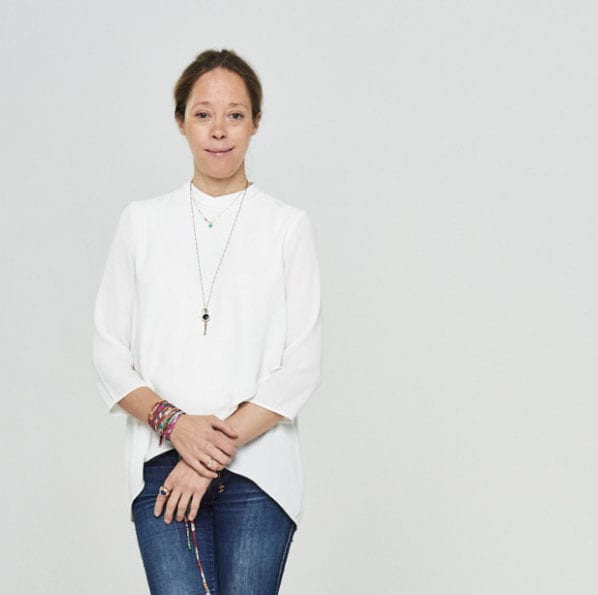Palma Michel is an executive coach and author of ‘The Authority Guide to Mindful Leadership’ Palma’s work teaches how to run your business the mindful way using simple techniques and exercises to manage yourself, manage others and effect change in a mindful way. I caught up with Palma to find out a few of her practical tips for mindful leadership:

Image: Sloane Magazine. Author: Palma Michel
Tell us a little about what you do….
I work as a mindfulness teacher and coach with individuals and organisations. My coaching is focused on empowering individuals to move beyond technical expertise and become more authentic leaders and find lasting happiness and fulfilment by living with more presence, purpose and meaning. As a mindfulness teacher I support individuals with stress management, navigating transitions and times of upheaval. I also introduce mindfulness to organisations and have worked with brands like Converse, Mario Testino+, The Soho House Group, Second Home London and Cheil. When working with organisations I help them build purpose driven, innovative and sustainable cultures that allow enterprises and individuals to thrive in the 21st century. I focus on how companies can build resilience, emotional intelligence, increase productivity and boost creativity.
What inspired you to write “The Authority Guide To Mindful Leadership”
Having experienced the transformative power of meditation in my own life I felt a deep calling to empower other people to find the same inner peace and lasting fulfilment. Once I learned more about neuroscience and what happens in our brains when we are faced with uncertainty, pressure and change and how meditation can reverse this unconscious reactivity, I felt everybody should know about this. As a former board-level headhunter I have seen many examples of great leadership but also many examples of not so great leadership. We are living in pressure cooker times. In this new era, we need bold and courageous leaders who remain calm and present when under pressure. We need leaders who act with clarity, integrity and compassion and take sustainable decisions for the greater benefit of all.
Have you ever wondered, why leaders act seemingly out of character when under pressure, why we have so many leaders who lack integrity or if we can train leaders to remain calm and true to their values when the going gets rough?
In The Authority Guide To Mindful Leadership, I explore these questions including insights on how our brain works, why some people feel stressed and others don´t even when faced with the same conditions. I also explain how training the brain through mindfulness practices creates more focused, compassionate and innovative leaders and how mindfulness
is not just a nice to have but a core capacity for today´s and tomorrow´s leaders. To me, before managing anything else, leaders need to learn how to manage themselves, which starts by “managing” their nervous system. The Authority Guide To Mindful Leadership offers a practical toolbox of exercises and techniques for managing yourself, managing others and effecting broader change by creating sustainable companies with a purpose. It is a practical roadmap for applying mindfulness practices to leadership and business challenges.
Can you share your top 3 practical tips for on how to use mindfulness to create a culture for creativity
Manage Your Nervous System: Culture is usually built from the top, hence the behaviour and management style of the leadership team is key. Leaders need to be comfortable with the space of uncertainty and not knowing and able to hold the creative container during times of upheaval.
The problem is that when faced with pressure, uncertainty, volatility, lack of sleep or emotional turmoil, there is a tendency to jump to conclusions, to react unconsciously, to procrastinate or to collapse the creative roller-coaster prematurely – in short, a tendency to get out of the situation as quickly as possible, without being aware of the possible long-term consequences of the actions taken. There is a tendency to have a tunnel vision and to become closed, defensive and blame others when things go wrong. In those moments there is no space in our minds and it is impossible for our brains to get into a relaxed alpha wave state, which is required for those “light bulb” moments.
Whenever you feel stressed, under pressure, notice negative thoughts or feel triggered in any way, try this short breathing exercise to calm down your amygdala and get yourself back into the control zone: Take a few conscious breaths through your nostrils, inhaling deeply all the way into your abdomen. Exhale through your nostrils – the key is to make your exhale slightly longer than your inhale. Count to two on your inhale and elongate your exhale by counting to four.
Open Communication: Leaders also need to create an environment where everyone can participate and everyone´s voice is heard, rather than one person dominating or shouting others down. Diversity of backgrounds and opinions and learning how to encourage collaboration across functions are other crucial factors.
From my experience everyone wants to be heard and seen and most people think they are much better listeners than they really are. If you finish other people´s sentences or just wait for your turn to speak, this can stifle your team´s confidence and creativity. Encourage all team members to speak and listen with curiosity and openness and allow difference in opinion. This openness includes listening to difficult truth without blaming anyone. During team meetings try to bring your full attention to whoever is speaking; if your attention wonders off, the moment you notice that, bring your attention back to the speaker.
Ask Questions: Asking questions creates an openness where something new can arise. When managers and companies stop asking questions and assume they know all the answers, there is a risk for complacency and creativity is blocked. A lot of what we do on a daily basis and as a business is habitual and on autopilot. Once a habit is formed, we no longer question it. Sometimes it takes a newcomer to a business to ask why are we “doing X” for us to notice that it no longer makes sense in the current environment.. Asking questions is an easy way to interrupt the autopilot, break through the mental noise and bring curiosity to any situation. Don´t assume you know the answer or something is a given, but continuously ask questions and challenge your assumptions including your own beliefs about a situation. Questions you can ask to get started: Why are we doing what we are doing and how is that aligned with our purpose? What can we learn? What do our customers really need?
Find out more from Palma and grab a copy of her book at: www.authorityguides.co.uk
Stay fabulous
Christine (big thank you to Palma for sharing her wisdom)





Leave a Reply